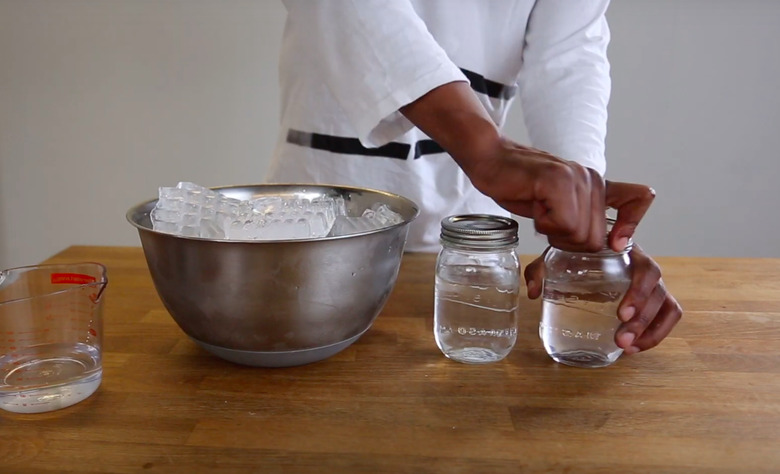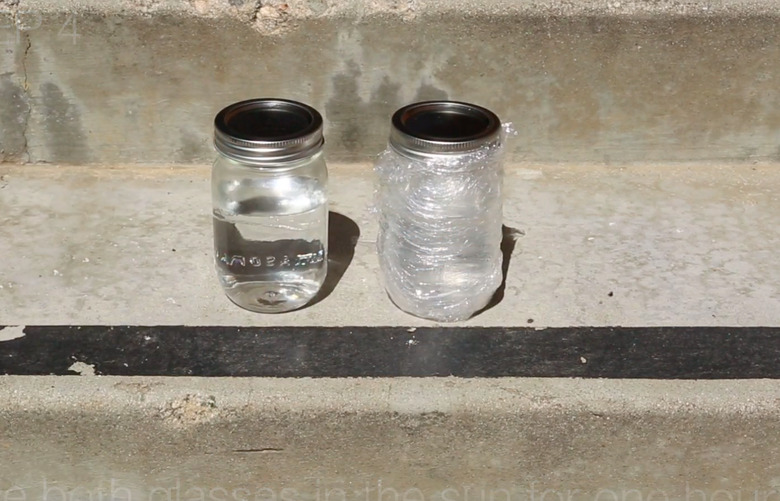Simple Models For Global Warming Science Projects
The average global temperature increased by almost one degree Celsius during the 20th century, and it continues to rise. That may not seem like much, but this slight change has already resulted in some major ecological consequences, including habitat loss and rising sea levels. Temperatures are expected to continue to increase, forcing countless species to adapt to new environments. Simple experiments can help you understand how global warming works and how it affects the environment.
Make a Greenhouse
Make a Greenhouse
The best way to understand how a greenhouse works is to make a small and simple one.
1. Fill two glasses with cold water
Fill two glasses of equal size each with 2 cups of cold water. Put five ice cubes in each glass, then wrap one in a plastic bag and seal it tightly.
2. Place glasses in sun
Place both glasses in the sun for one hour, then measure the water temperature in each glass using a household thermometer.
The glass covered in plastic should be warmer because the bag will have trapped heat in the glass, in the same way that greenhouse gases trap heat in the atmosphere. This simple working model on the greenhouse effect costs almost nothing.
Find a Footprint: Project Work on Global Warming
Find a Footprint: Project Work on Global Warming
A carbon footprint is an estimate of the greenhouse gases emitted by a person, building or activity. Estimate your own carbon footprint, or that of your school, by analyzing all of the activities in your daily life that contribute to climate change. Many daily activities cause greenhouse gas emissions, including driving to school, eating food and turning on lights. Work with friends to brainstorm which activities contribute to global warming and estimate your carbon footprint using an online calculator. Then compete with your friends to see who can reduce their carbon footprint by the largest margin.
Global Warming Consequences
Global Warming Consequences
For a simple look at the way climate change affects plants, place a healthy plant in front of a running hair dryer. It won't take long for the plant to wilt, demonstrating that some plants cannot cope with major environmental changes like those brought about by global warming. Plants combat global warming by absorbing the greenhouse gas – carbon dioxide – during photosynthesis. Test this by placing a fern in a sealed, dark plastic bag for one hour. Measure carbon dioxide levels in the bag with a CO2 sensor. Then place the fern in a clear plastic bag and compare CO2 levels after one hour. The fern photosynthesizes in the clear bag, so CO2 levels will be lower.
Engineer a Solution
Engineer a Solution
Solar power and other alternative energy sources create energy without emitting climate-changing greenhouse gases. Make a solar air heater by crafting a cardboard cover that fits snugly inside the frame of a south-facing closed window. Paint the inside of the box black and cut small vent holes at the top and bottom. Tape plastic wrap to the top of these holes. Install the box in a window and place a thermometer through the vent holes periodically. The temperature at the bottom of the box, where the system takes in air, should be colder than the air leaving the vent holes at the top of the box. Solar energy warms the air between the box and the window.
Cite This Article
MLA
Cairoli, Sarah. "Simple Models For Global Warming Science Projects" sciencing.com, https://www.sciencing.com/simple-models-global-warming-science-projects-20316/. 15 May 2019.
APA
Cairoli, Sarah. (2019, May 15). Simple Models For Global Warming Science Projects. sciencing.com. Retrieved from https://www.sciencing.com/simple-models-global-warming-science-projects-20316/
Chicago
Cairoli, Sarah. Simple Models For Global Warming Science Projects last modified August 30, 2022. https://www.sciencing.com/simple-models-global-warming-science-projects-20316/

